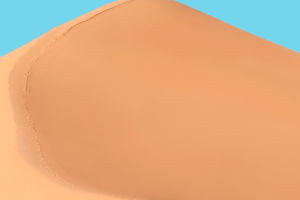Camels belong to the genus Camelidae and are commonly known as the "ship of the desert." They possess a small head, a thick and long neck that curves like a gooseneck, and a tall body that is capable of enduring hunger and thirst for extended periods.
A camel can survive for two weeks without water and up to a month without food.
There are only two types of camels in the world: the dromedary and the Bactrian camel. The dromedary is only found in the wild in Australia, while those found in other areas are artificially raised. Bactrian camels are stronger in comparison because they exist in the wild and in their native environment.
The camel's reputation as the "ship of the desert" is well-known. The harsh desert environment, characterized by strong winds, quicksand, and extreme heat, has claimed the lives of many animals. However, humans can rely on domesticated camels to travel long distances and cross the desert successfully.
The camel's body is unique, with a hump on the back, a pair of ears, and long eyelashes on the head. The eyes can be closed to protect themselves from sand and dust. Camels have four strong legs and flat hooves, which allow them to walk on rough terrain in deserts and semi-deserts, making them very adaptable.
Camels are very special animals that live in arid deserts and wilderness areas. They are widely used in transportation because of their resistance to drought, hunger, fatigue, and disease.
Camels are very strong animals that can carry loads up to 500kg and travel in extremely harsh environments. Even in the desert, camels can maintain a speed of 5-7 kilometers per hour.
Camels possess kidneys that filter salt from the blood, enabling them to drink very salty water. They also conserve water in their bodies, reducing urination and sweating.
The camel's fur is dense and soft, which can keep them warm at night and reflect sunlight during the day, making them less prone to heat stroke. They also have water sacs inside their bodies that can store a lot of water, reducing their need to drink water as often as other animals.
Camels have a deep cultural influence. In Arab culture, camels are regarded as a symbol of wealth and loyal companions of Arabs. In Central Asia, camels are the primary means of transportation for many nomadic peoples.
Camels have other uses besides transportation. For example, their milk can be used to brew cheese and other dairy products. In ancient times, camel dung was used as fuel, and their fur was used to make clothing and tents. In some regions, camel urine is also used to make medicine.
Camels possess some interesting characteristics. They can tolerate high body temperatures up to 49 degrees Celsius and can go without water for several days. Additionally, they have an excellent memory and can remember the routes they have traveled and the experiences they have had.
The camel is an animal well-adapted to the desert environment, and their stamina and adaptability have made them valuable companions for humans. Whether in transportation or culture, camels play a crucial role.


